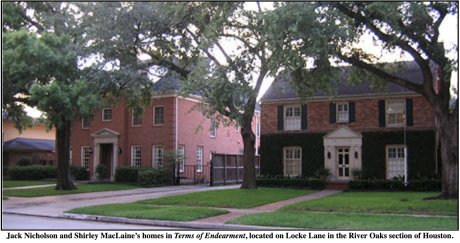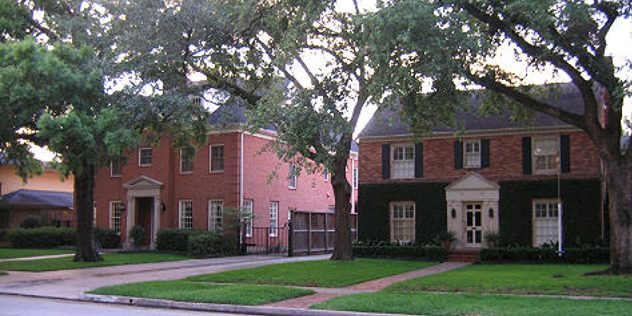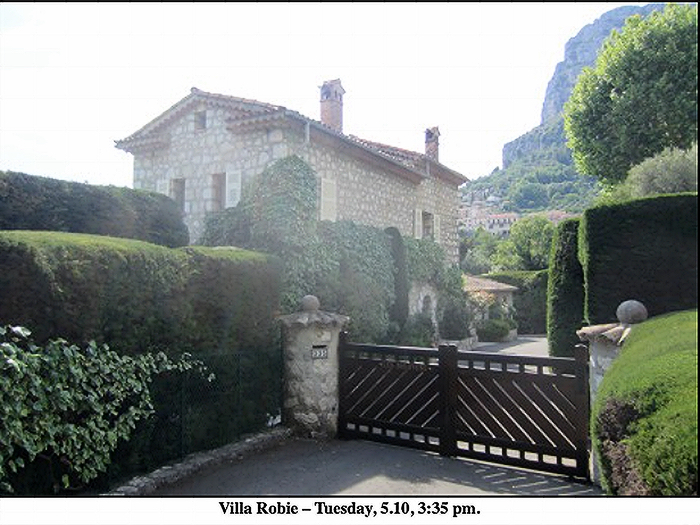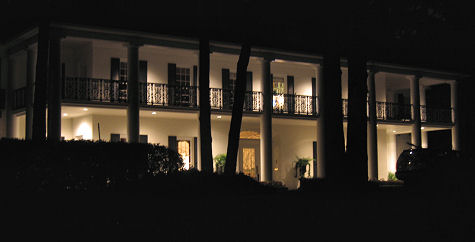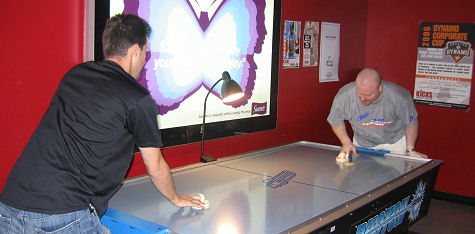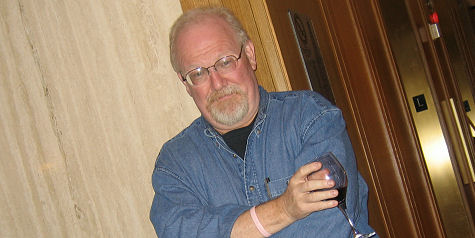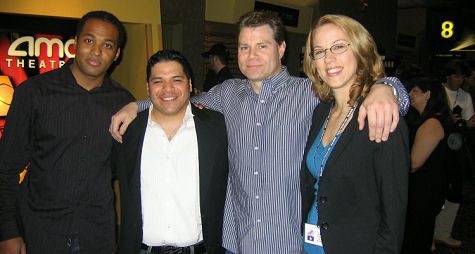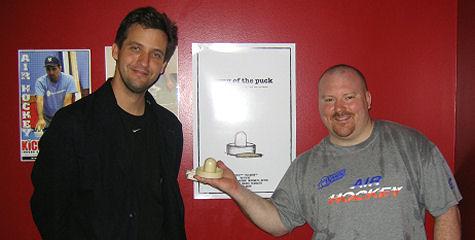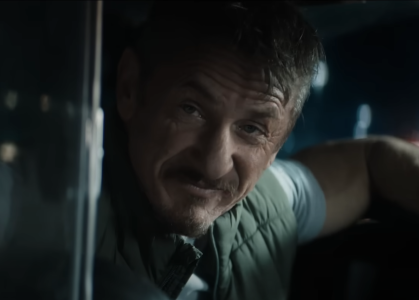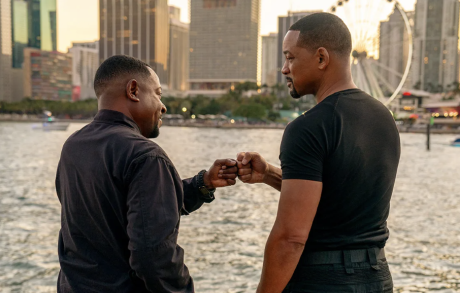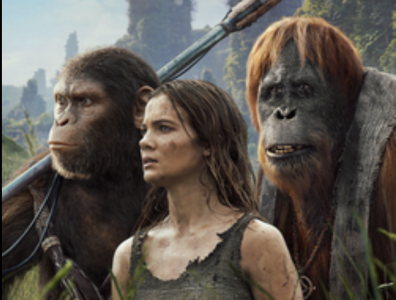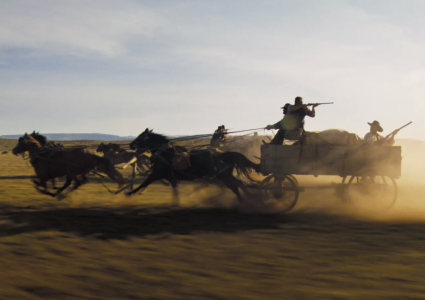I’m staying in a soul-less, corporate-style hotel in Houston between now and Mon- day morning in order to dive into Worldfest, which I’ve never been to before. I was invited to visit a few weeks ago by its founder, Hunter Todd, and it seemed like an agreeable idea, and it felt even better as I flew the hell out of Los Angeles Wednesday morning.
Worldfest is a friendly, funky-ass film festival that’s mainly about smallish, hand- crafted (as opposed to machine- or committee-crafted) indie films — some of them made by or starring Texans, and others from here and there.

The entrance to the big lounge at Houston’s Renaissance Houston hotel, just off the scenic Southwest Freeway.
Todd, who started this homegrown festival way back in the ’60s (only the New York and San Francisco festivals have been around longer), is the principal bequeather of the “friendly” stuff, although everyone I’ve met here so far — staffers, bus drivers, fast-food servers — has been warm, professional, considerate.
The funky-ass elements are…well, the movies. Pretty-good funky, I mean. Funky different. The better ones (and there are plenty I have yet to see) have a certain face-up quality. Not radically sophisticated and maybe a little average Joe-ish at times, like a hand-painted sign on Main Street or like tight jeans with cool-ass patches. One that’s a tad off-center, another that’s “there” but not 100% realized, but all with a certain non-Sundance-y apartness.
I’m saying it can be a refreshing thing to sample movies that haven’t been made by absolute cream-of-the-crop, front-of-the-pack types. Refreshing as in, “Oh, yeah… movies can tell stories this way too. And that way. Find your way through it…okay, I get it now.”
I’m not sure that the term “Worldfest” is entirely appropriate. It seems as if “Peoplefest” would be more on the mark. Movies by, about and for regular folks who love movies enough to see films with a few speed-bump elements (but not too many), and who enjoy the hell out of their Texas popcorn. (I had several handfuls last night, and it’s a lot more buttery than the popcorn in Los Angeles.)
I can think of three Worldfest films that are about Texans, or made by Texans, or featuring or costarring Texans. Lorraine Senna’s Paradise, Texas, the festival opener, about a middle-aged actor (Timothy Bottoms) on his way down who gets a chance to show what he’s made of. Matthew Marconi’s Truce, a not-bad drama about a weary old cowboy (Buck Taylor) trying to settle some life issues. And a documentary called Into the Wind about four or five Texans who are into power-paragliding.

Worldfest Houston
generalissimo Hunter Todd (lower left), daughter Katy Lea Todd (front, middle), wife and partner Kathleen Haney-Todd (lower right); staffers June Pennington, Alicia Granvaud, Valerie Blair, Cherry Kutac, Jason May, Ariane Hannaford, Christopher Schecter, Sara Albert, Kerrie Pegues.
And then there’s In the Dark, a drama set in L.A. about a young Hispanic guy trying to become an agent, which can be called half-Texan by way of Brian Luna, an appealing actor from from San Antonio, playing the Hispanic guy. (I’m stretching it, I realize.) And then there’s Eric Anderson’s Way of the Puck, an air-hockey doc that I wrote about a couple of weeks ago, that’s kind of a Houston movie because a strong concentration of air-hockey enthusiasts live here.
Oh, and a doc about Gulf Coast surfers called Miles to Surf, which focuses in part on “tanker surfing,” which is about riding the wash generated by oil tankers head- ing up the Houston ship channel from the gulf.
There’s something mildly exciting about rummaging through a bunch of films that no one’s told you need to see or avoid, movies that may be excrutiating or a blinding revelation or somewhere in between…but it’s all a dice-roll.
The only beef is that the theatre where the Worldfest features are showing is way the hell down the road — four or five miles — from festival headquarters at the Renaissance Houston. There are three shuttles that travel to and fro, but I’m the captain of my own ship. I’d rather walk, drive a car, peddle a bike, take a bus.
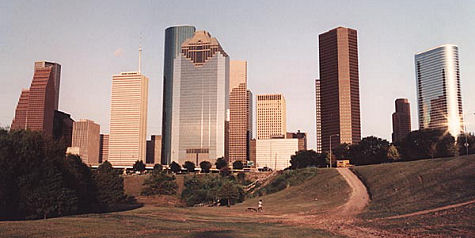
I said it felt really good to fly out of Los Angeles yesterday. But I’ll be honest — I started to have second thoughts minutes after I touched down in Houston.
There are good people all over this town but with the exception of a visit Wednesday night to River Oaks, where the really rich folks live and where the oak trees are huge and the grass is moist and fragrant, Houston seemed less than abundant with down-home charm. And if you’ve been to New York or Paris or London or Rome, it feels lacking in cultural refinement.
To me, it’s an arid corporate hee-haw town. Not enough sidewalks. Cavernous malls. Lots of middle-aged guys with monster beer bellies. Expensive cars tearing around like they’re in the Monte Carlo Grand Prix, and all those revolting glass-and-steel towers. Not enough trees. Women with vaguely predatory vibes and long jaws. And the strip clubs — strip clubs! — as prominent and well located as the better restaurants, music stores and markets…nothing covert about them.
A friend (a blonde whose presence and personality are the best things about being here so far) told me before I came that Houston is like L.A. but without the soul, and I think that just about nails it.
Early tomorrow morning I’m going down to the courthouse where the Enron trial is happening. And then I’ll drive by St. John’s, the private school where Wes Ander- son shot Rushmore, and maybe visit Shirley MacLaine’s Terms of Endearment house.
Grabs
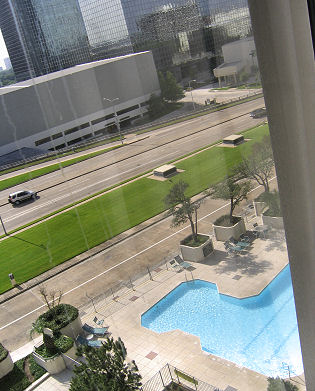
View from my hotel room, looking out on the beautiful Southwest Freeway.

Pond at twilight, south of Houston’s Williams Tower
Rollover
I don’t want to say too much about Wolfgang Petersen’s Poseidon (Warner Bros., 5.12) because this isn’t a regular “review” or anything. Maybe if I begin by talking about the 1972 Ronald Neame film (a piece of big-budget schlock that was a major blockbuster in its day), it’ll seem like less of one.
The original The Poseidon Adventure, which I just saw on a new double-disc DVD, was a bit rough to begin with — cornball characters, lumpy dialogue, cheesy special effects — and time has not helped. It’s almost painful by today’s standards — a movie with a two or three strands of silver hair growing out of its ear and some wretched acting here and there, and that putrid theme song, “(There’s Got To Be) A Morning After.”
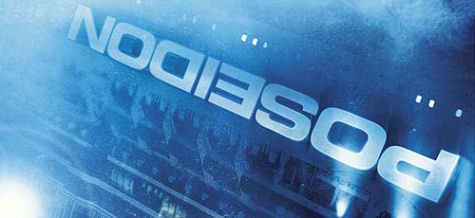
Gene Hackman’s combover hair style looks awfully weird, and Shelley Winters’ fat Molly Goldberg character is enough to make anyone groan. And the effects…forget about it. The opening credits are laid over a slow-motion shot of what looks like a three-foot model of the S.S. Poseidon cruising along in a studio tank.
Poseidon, which I saw Tuesday afternoon, is a much better film. I didn’t see the reviled TV-movie version that aired last November with Steve Gutenberg, but it’s probably a lot better than that also. Lots of excitement. Much better special effects all around. No bullshit sentiment or emotional fat lathered onto the story or the characters. Streamlined, adrenalized…at least one action-suspense sequence that is arguably classic. And only 100 minutes long vs. 117 minutes for the ’72 version.
It moves right along and kicks ass according to the rules of the game it’s playing. There is no basis for any substantive quarrel with any movie that does what it sets out to do, and this $150 million action thriller does that. It is what it is, take it or leave it, etc.
Less than fifteen minutes of character set-up and along comes the rogue wave. (I adore the fact that there’s no explanation or set-up except for everyone’s memory of the Southeast Asian tsunami.) And then it’s just a matter of staying with a small team of survivors (Josh Lucas, Kurt Russell, Richard Dreyfuss, Emmy Rossum, Jacinda Barrett, etc.) trying to climb down — up — to the ship’s hull to find a way out.
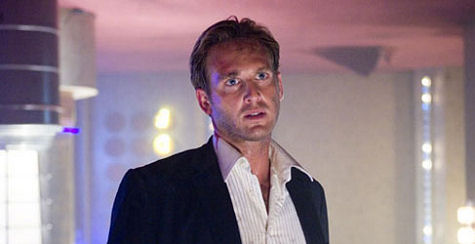
Josh Lucas in Wolfgang Petersen’s
Poseidon (Warner Bros., 5.12)
What could be simpler? And no one, thank fortune, talks about their fears or longings or what’s wrong with their life, or how much they love or miss their wife, husband or kids. I felt truly delighted — I think I can say I was overjoyed — that Petersen and screenwriter Mark Protosevitch made the decision not to go in this direction.
Remember those desperate survival sequences in Titanic with Leonardo DiCaprio and Kate Winslet sloshing and swimming around and trying not to drown in the lower areas of the ship as the water gets higher and higher? It’s all like that but cranked up a bit more.
In fact, speaking of Titanic, one of the things intensifying the suspense in Petersen’s film is the fact that this new super-sized S.S. Poseidon is sinking (which wasn’t a factor in the ’72 film).
And I love the eye-filling CGI aerial shot of the big ship that opens the film. It swoops around and goes on for a long while, and I think Petersen did this in part so people will remember that a similar shot in Titanic, released eight and a half years ago, was much cruder…cartoony even.
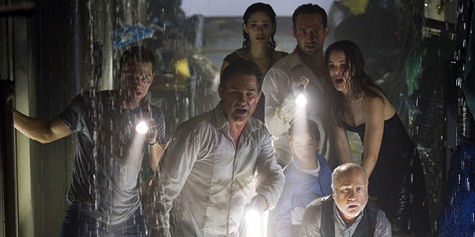
I’ve probably gone on too long so I’ll wrap it up by saying if Warner Bros. doesn’t give it a big nationwide sneak this weekend (which they apparently aren’t planning on) they’re making a big mistake. They’ve got a quality package — they should let people see it and react. I only know that the TV ads and trailers haven’t sold it sufficiently thus far.
For the first time ever, by the way, I found myself warming to Josh Lucas, although his character — a selfish professional gambler — isn’t exactly “likable.” What got me is the ferocious life-force energy that Lucas exudes once the crawling-through- the-ship action begins. He’s an unstopppable survivalist.
I said to myself early on, “I’m with this guy…I’d want him with me if I were in a tough spot.” I’ve never felt much liking for Lucas before, so this is (somewhat) significant.
Rocket Man
The great critic F.X. Feeney told me the other day about a short film about 9/11 called The Falling Man, and that it was about to be shown at the Tribeca Film Festival. With Paul Greengrass’s United 93 set to open the festival on Tuesday, 4.25, I thought right away, whoa…I should see this. So I did on Friday afternoon (4.21), and I went “whoa” again.
Directed and written by Kevin Ackerman, The Falling Man is an M. Night Shyama- lan-styled spooker about a real-life guy who bought it on 9/11…probably the best known of the 200-something people who jumped from the burning towers because his picture was in the New York Times and everywhere else the next day.
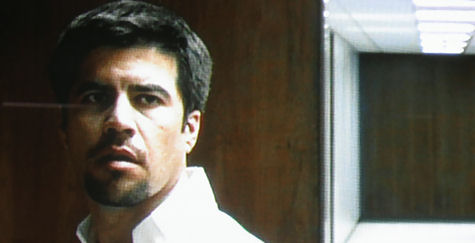
Rick Ojeda as Windows on the World employee Jon Briley in Kevin Ackerman’s
The Falling Man Taken by AP veteran Richard Drew, it showed a tallish, goateed, light-skinned African-American guy, falling upside down in a white shirt, orange T-shirt, black pants and black high-tops, dropping at close to 150 mph in a perfectly vertical posture, not flailing (in this particular shot, at least) and seemingly resigned to his fate, or at least not desperately fighting it.
Part flashback and part flash-forward, The Falling Man is a trippy life-death riff, and well worth seeing.
It’s about a waiter (Rick Ojeda) working at Windows on the World, the restaurant on the top floor of the north tower, who’s sent down to the 103rd floor to the offices of Cantor Fitzgerald to deliver some food, but he can’t find anyone. Vacant. Empty desks, papers on the floor, silhouettes behind smoked glass but no one there. He’s Earl Holliman in “Where Is Everybody?”, anxious and starting to freak out.
Then he runs into a woman with gray skin who looks like a zombie out of George Romero’s Dawn of the Dead, and it hits you after a second or two that her skin isn’t zombie-gray but ash-gray. And then spookier things happen, all leading to a realization.
It’s September 11, 2001, of course. Sometime around 9:41 am…or in some nether place made of memory, premonition, and flashbacks thrown together. But most of it is happening in the mind of the waiter, who existed and was named, in all likeli- hood, Jon Briley.

There was natural curiosity in the public mind about who he was because of the photo, but Briley’s identity was in question for the better part of two years, partly because his body was destroyed, partly because the photo was pulled from circulation, and partly because his father and others in his family didn’t want to know or deal with it.
But then Esquire‘s Tom Junod wrote a piece about the photo called “The Falling Man“, which ran in the September ’03 issue (with Colin Farrell on the cover). Junod came to the conclusion it was probably Briley, and then a British documentary, also called The Falling Man, ran last month and concluded it was probably Briley too. The makers based their findings on testimony from a top chef who worked at Windows on the World named Michael Lomonaco as well as Briley’s older sister, Gwendolyn.
Then came a filmmaking contest sponsored by Esquire a few months later in which contestants had to make a short film based on one of a selection of short stories and features that had appeared in the magazine.
Ackerman, who had recently directed a low-budget noir called Lonely Place, decided to make a film about Junod’s piece. The idea has come to him in a flash during a visit to the downtown LA set of In Good Company, when he realized that a suite of offices in a tall building he was standing in could double for the offices of Cantor Fitzgerald.
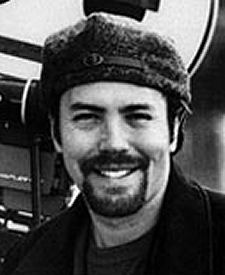
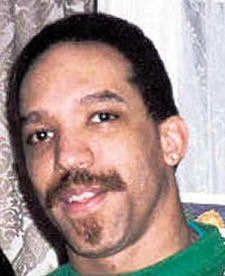 Falling Man
Falling Man director-writer Kevin Ackerman; 9/11 victim Jon Briley
Ackerman shot the film in April 2004 over a couple of days, just before the contest deadline. It cost him about $6000 at the end of the day. Ojeda and Ron Sanford produced it with him. It was shot by John Hale and Steve Smith and edited by David Miller.
Although Esquire‘s contest specified that the shorts be no longer than five minutes, Ackerman’s ran eight minutes. It meant he couldn’t win the prize money (a piddly $2500) but the judges — among them director Alexander Payne (Sideways), former Paramount Classics chief Ruth Vitale and Endeavor agent (and Paramount Clas- sics honcho-to-be) John Lesher — saw it anyway, and were impressed.
By September 2004 Ackerman had moved on to other things, but Payne got in touch that month and said he was really taken with The Falling Man (“This film is fantastic”) and urged Ackerman to shoot additional footage in order to round it out and fulfill his vision.
So Ackerman did that. He added some new footage (a sequence with a 9/11 memory wall was a significant addition, I can say) and finished the extra lensing in September 2005. Naturally, he felt the Tribeca Film Festival was the best place to premiere it, especially given a stated interest by festival honcho Robert De Niro in wanting to see 9/11-themed films submitted. De Niro saw a rough cut of The Falling Man last December and it was accepted soon after.
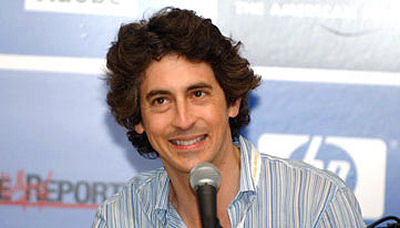 Falling Man
Falling Man admirer and supporter Alexander Payne
Ackerman just finished the final, fussed-over version — transferred to 35mm film, in anamorphic scope — earlier this week. He flew to New York this weekend with the print.
The Falling Man will have four showings during the festival — on Sunday, 4.30, 9 pm at the Museum of Jewish Heritage, on Tuesday, 5.2, 6 pm at Pace University’s Schimmel Center, on Wednesday, 5.3, 10 pm at AMC Loews Village VII, and on Friday, 5.5, 11 pm at Regal Cinemas Battery Park 5.
It’s not an absolute masterwork but it’s a very penetrating film, obviously because it draws on 9/11 emotions, but also because it adds a surreal, Twilight Zone-ish feel- ing to a familiar canvas, supplying a kind of fresh echo…producing a result that’s unnerving but on some level very “real.”
Ackerman can be reached via Tried & True Productions at 323.466.1602. His email is citizenack@aol.com.
